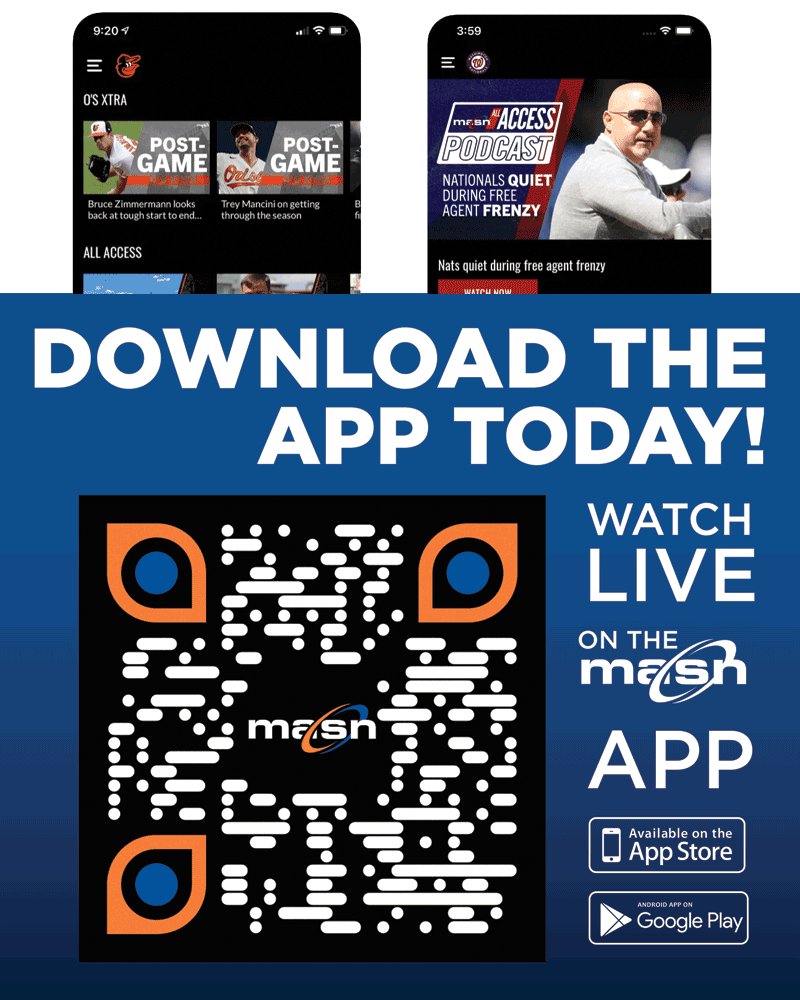Irvin should face more pressure after disappointing season
PLAYER REVIEW: JAKE IRVIN
Age on Opening Day 2026: 29
How acquired: Fourth round pick, 2018 MLB Draft
MLB service time: 2 years, 152 days
2025 salary: $774,600
Contract status: Arbitration-eligible (Super Two) in 2026, free agent in 2030
2025 stats: 9-13, 5.70 ERA, 33 G, 33 GS, 180 IP, 105 H, 120 R, 114 ER, 38 HR, 62 BB, 124 SO, 6 HBP, 1.428 WHIP, 72 ERA+, 5.64 FIP, -0.4 bWAR, -0.4 fWAR
Quotable: “I want to come back next year and be a guy that doesn’t just eat innings. I want to throw a lot of innings, and do it with quality. I know that I can still be an ace, and that’s the goal.” – Jake Irvin
2025 analysis: The question facing Irvin entering his third big league season: Was he a legitimate workhorse who could consistently give his team a chance to win and establish himself as a frontline starter, or was he too inconsistent to reach that level and would be destined for the back of the rotation? Unfortunately, though he did have a brief early stretch in which he resembled the former description, the majority of the season he resembled the latter description. At best.
Three straight excellent April starts against the Pirates, Rockies and Mets left Irvin with a 3.19 ERA. And though he followed that up with a blowup outing in Philadelphia, he still reached late-May with a 3.42 ERA after shutting out the Giants over eight standout innings. Then the bottom fell out, and he never recovered.
Over his final 22 starts, Irvin saw his ERA skyrocket to 7.02. The two biggest reasons for that? First, he served up a staggering 28 homers during that prolonged stretch, ultimately finishing the season with a club record 38 home runs allowed. On top of that, he consistently dug himself and the Nationals into significant holes. His first inning ERA was a league-worst 9.82, with 36 earned runs allowed in 33 starts thanks to eight homers surrendered in the opening frame.
2026 outlook: Thanks to an unexpectedly successful rookie season and an All-Star-worthy first half to his sophomore season, Irvin has never really faced any pressure to hold down his spot in the Nationals’ rotation. (The organization’s lack of viable alternatives, of course, has also played a role in that.) The downside: Perhaps the right-hander has gotten too comfortable, never feeling like he was pitching for his job. No matter how high the ERA got, he was always assured of getting the ball five days later for another start.
Can the Nats afford to continue that pattern with Irvin as he approaches his fourth season? He has now made 90 big league starts, during which time he has produced a 4.94 ERA, 1.338 WHIP and 87 home runs surrendered in 488 2/3 innings. Those numbers rank among the worst regular starters in the majors. At some point, he needs to be effective on a more consistent basis to merit his job.
The biggest concern this season was a drop in velocity. Irvin’s fastball averaged 93.9 mph in 2024, only 92.4 this year. His curveball dropped from 81.1 mph to 77.8 mph, his changeup from 88.4 mph to 85.6 mph. It should come as no surprise opponents’ batting average jumped on all three pitches. The Nationals insisted there was no physical reason for the drop, that it was likely a product of mechanics more than anything. It’s worth noting Irvin’s arm angle has steadily dropped the last three seasons, from 32 degrees to 29 degrees to 27 degrees. That could explain some of his issues.
The Nats still don’t have enough quality pitching depth in their organization to give up on Irvin. But with his salary set to spike as a Super Two arbitration qualifier for the first time – he could make between $3 million and $4 million next year – the organization has to start expecting more out of him and not treat him like an established rotation anchor yet.
